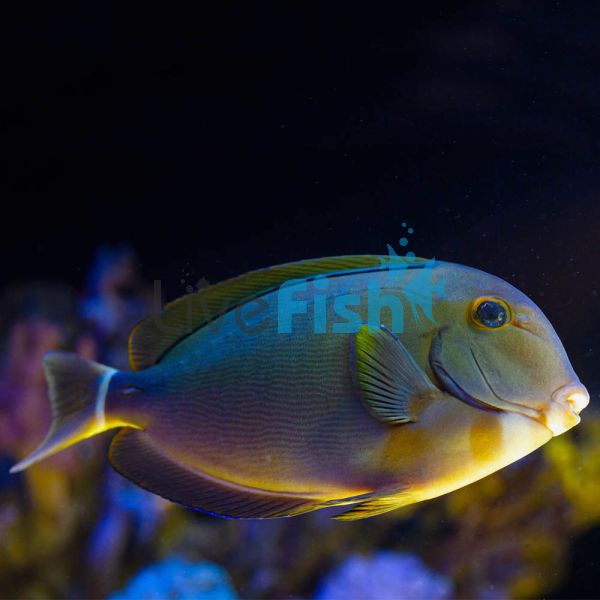Ringtail Tang - Medium
The Ring Tail Tang will brighten up an aquarium and integrates well in a community tank.
While these Tangs are not kept in captivity as regularly as other family members, with enough space and good nutrition, they will make a great addition to an aquarium.
The Ring Tail Tang is semi-aggressive, requiring moderate care. Their body colour is brown with a white ring around the tail and an orange blotch at the rear of the body. They are often mistaken for Acanthurus blochii – Ringtail Surgeonfish, but this species can be distinguished by a yellow spot behind the eye.
There is not much information about breeding habits of Ring Tail Tangs, but as a general rule, Acanthuridae will spawn in mated pairs.
Ring Tail Tangs may show aggression to members of their own species and defend areas that they consider to be their territory. Overall these fish get on well with a wide variety of other fish.
In the wild Ring Tail Tangs will inhabit shallow coral reefs, in lagoons and out in the sea. They often swim in schools with other types of fish.
Its native habitat is the Western Indian Ocean, Western Pacific, and Great Barrier Reef.
Tank Recommendations for the Ring Tail Tang
The minimum recommended tank size is 528 gallons (2000 litres).
It is best to add these fish to established tanks which have plenty of grown algae to graze on. So they will benefit from live rock, which encourages algae growth in an aquarium.
Ring Tail Tangs need high-quality oxygenated water, which is checked regularly. This helps to reduce instances of white spot which can occur in stressed fish.
Suitable Tank Buddies
Ring Tail Tangs are semi-aggressive which may result in hostility to fish of a similar size and family members.
Making sure their tank is an adequate size, as well as maintaining a nutritious, plant-based diet will help reduce aggression.
Usually Compatible
Ring Tail Tangs can co-habit with a variety of fish including Angelfish, Anglerfish/Frogfish, Butterflyfish, Boxfish, Cardinalfish, Clownfish, Eels, Grunts and Hogfish.
Sometime Compatible
Take care when housing Ring Tail Tangs with other Tangs, Filefish, Triggerfish, Sharks/Rays and Batfish.
Rarely Compatible
Seahorses/Pipefish should not be housed with Ring Tail Tangs.
Feeding your Ring Tail Tang
Ring Tail Tangs are herbivores, although they will also eat frozen products and meaty foods. The main part of their diet is algae, and they will also consume dried seaweed (Nori).
| Scientific Name | Acanthurus Auranticavus |
|---|---|
| Care Level | Moderate |
| Common Names | Orange-Socket Surgeonfish, Doctorfish, Lancetfish, Ringtail Doctorfish, and Ring-Tail surgeon |
| Diet | Herbivore |
| Fish Family | Acanthuridae |
| Lifespan (years) | 30 |
| Max. Length (cm) | 45 |
| Min. Tank Volume (l) | 2000 |
| Origin | Western Indian Ocean, Western Pacific, and Great Barrier Reef |
| Reef Safe | With Caution |
| Sociability | Semi-aggressive |
| Venomous | No |
| Water Conditions | 24-26° C (75-79° F), dKH 8-12, pH 8.0-8.4, sg 1.020-1.025 |




